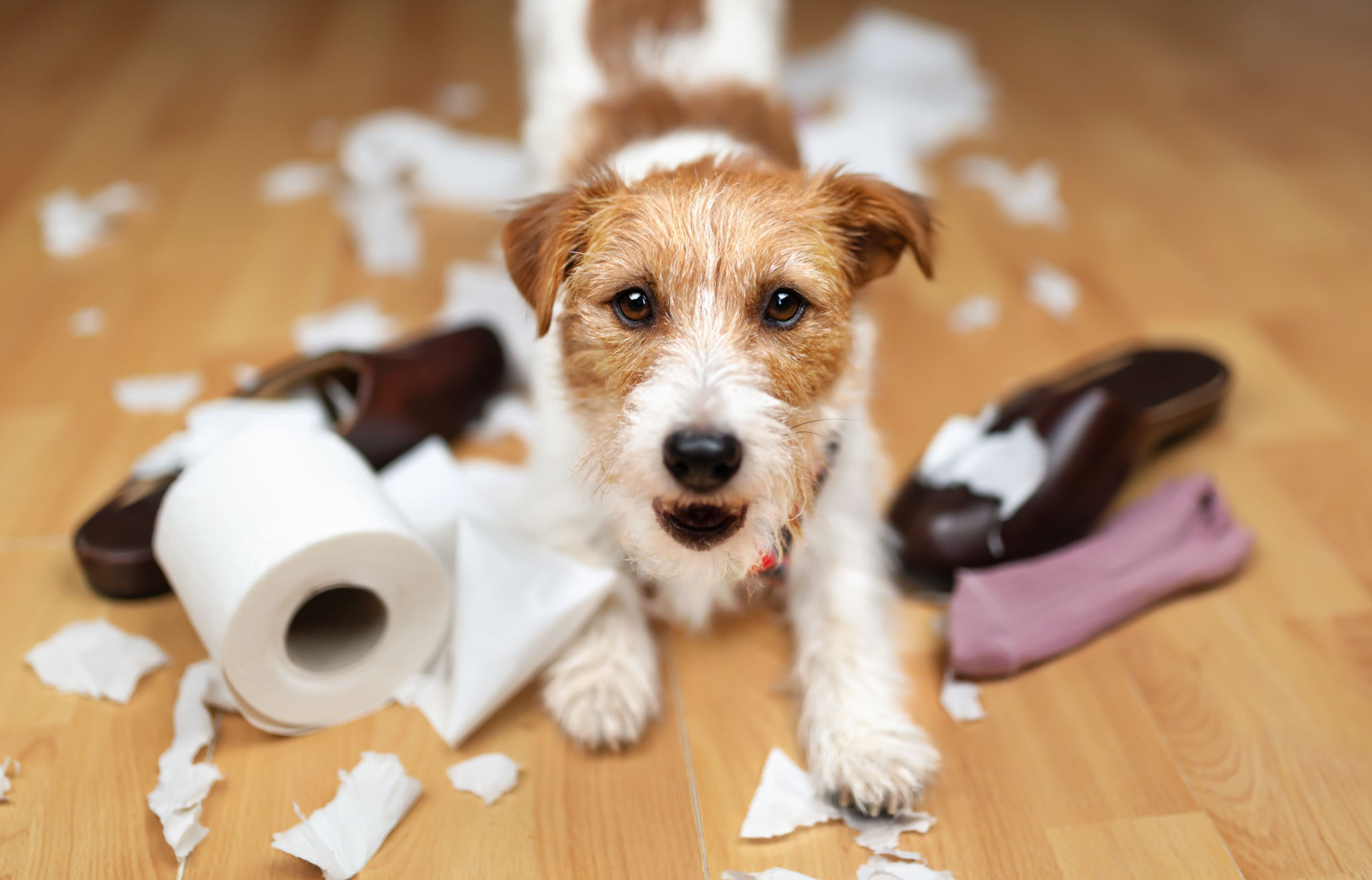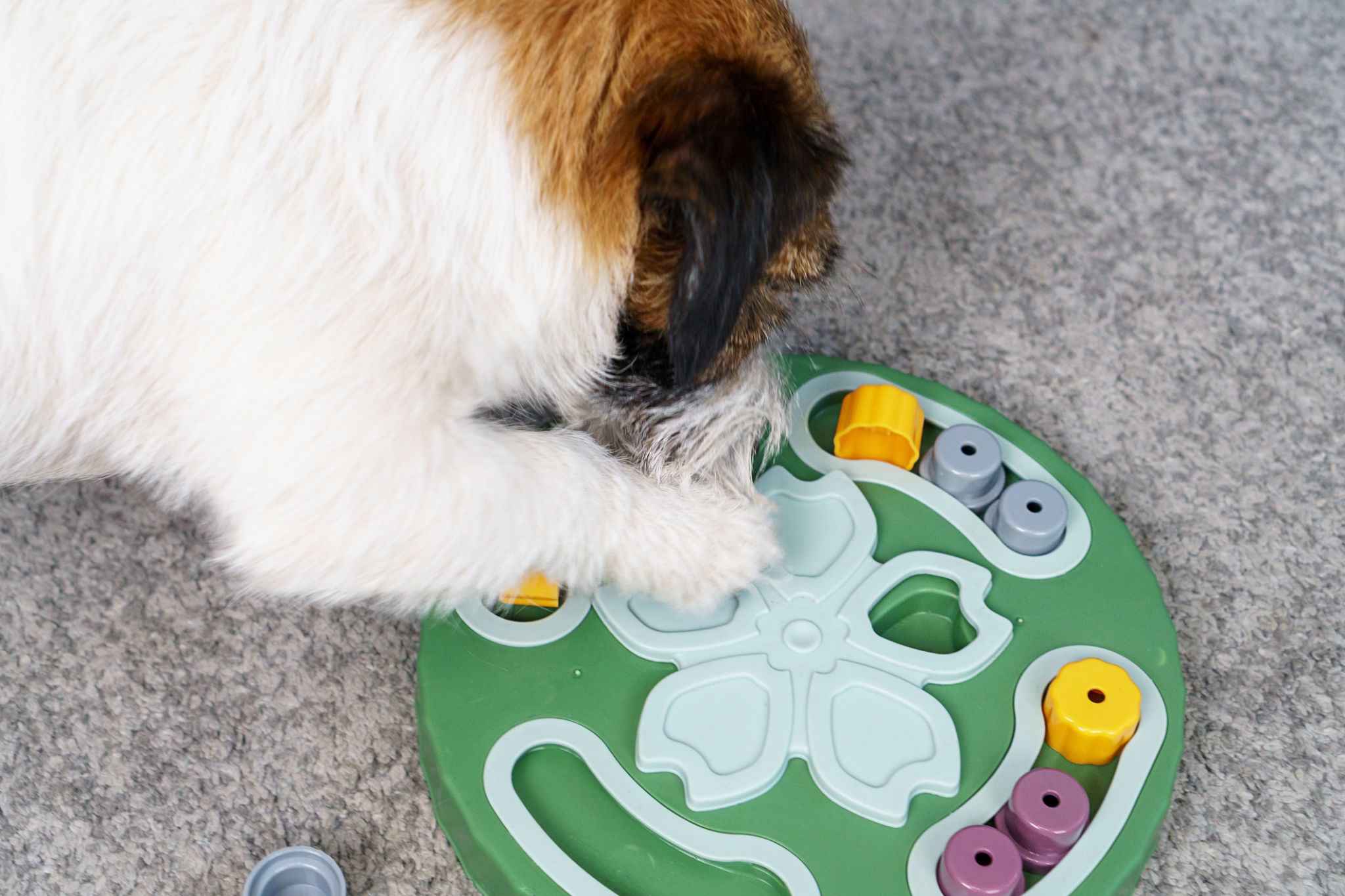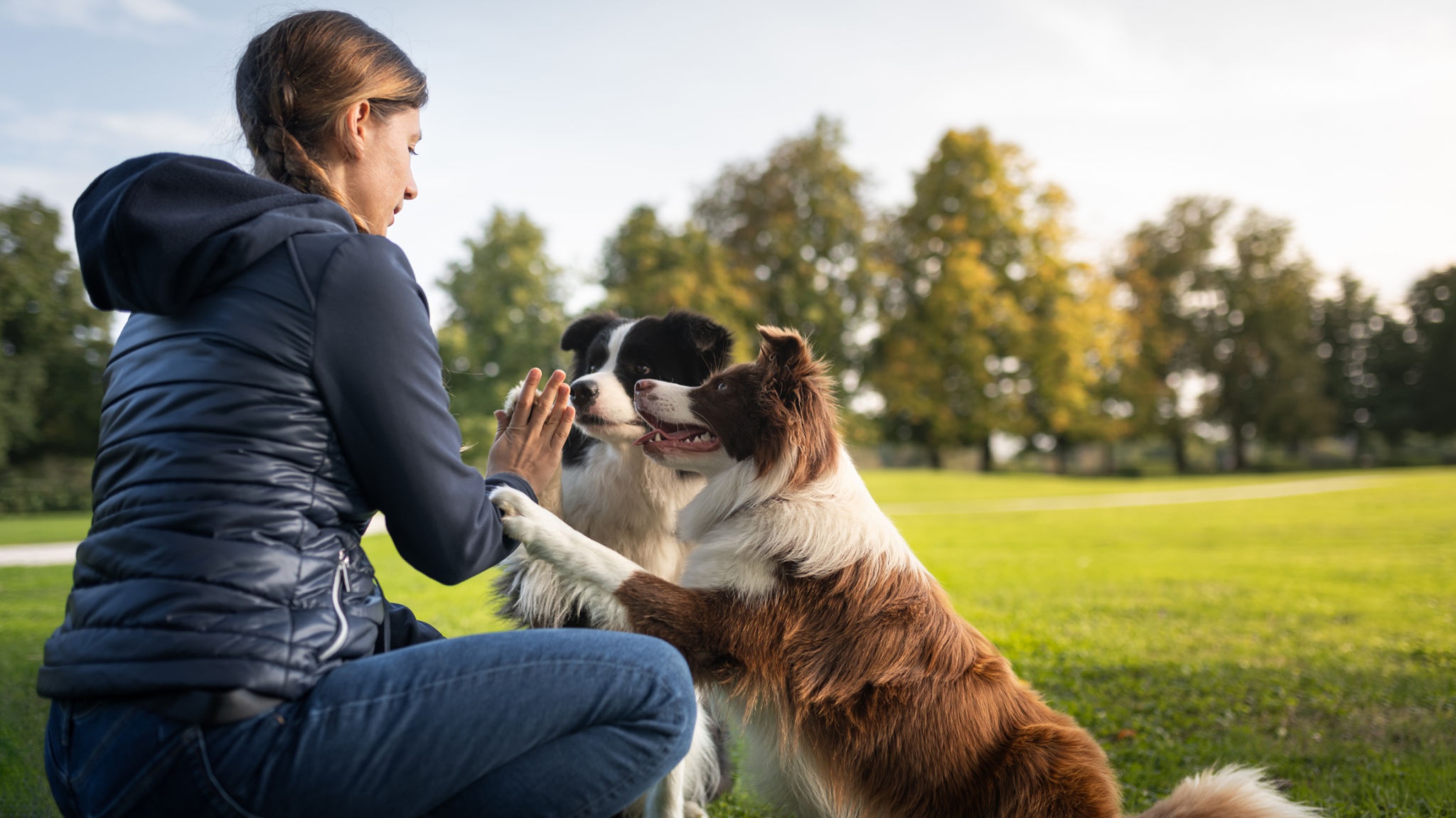Understanding Separation Anxiety in Dogs
DR
Dog Behaviorist for Separation Anxiety: Solutions & Training Tips

Separation anxiety in dogs is a prevalent issue that can cause significant distress for both pets and their owners. It occurs when a dog becomes excessively anxious and upset when left alone or separated from their primary caregiver. Recognizing the signs and implementing effective training techniques can help alleviate this anxiety and lead to a happier, more relaxed dog. In this article, we'll delve deeper into the causes, signs, and solutions for separation anxiety, offering comprehensive insights to help you and your furry friend.
Separation anxiety is a behavioral disorder where dogs exhibit distress and anxiety behaviors when they are left alone or separated from their owners. These behaviors can include destructive chewing, excessive barking, urination or defecation in the house, and attempts to escape. Understanding the root of these behaviors is crucial in addressing the issue effectively.
Destructive Behavior: Chewing furniture, scratching doors, or digging at windows can be signs of anxiety. Dogs often resort to these behaviors as a means to cope with their stress and discomfort. The destruction is not out of spite but rather a manifestation of their panic.
Excessive Vocalization: Barking, howling, or whining when left alone. These vocalizations are a dog's way of expressing their distress and attempting to call their owner back. It's essential to distinguish between normal barking and anxiety-driven vocalizations.

House Soiling: Urinating or defecating indoors when the owner is absent. This behavior is not indicative of poor training but rather a response to anxiety. Dogs may lose control over their bodily functions due to overwhelming stress.
Escape Attempts: Trying to escape from confined areas, which can result in injury. Dogs may attempt to follow their owner or find them, leading to potential harm or property damage. Understanding this behavior is crucial for implementing safety measures.
Pacing: Continuous pacing in a fixed pattern when left alone. This repetitive movement is a sign of anxiety and restlessness. Dogs may pace as a way to cope with their emotions, and it can be physically exhausting for them.
Hyper-Attachment: Some dogs may become overly attached to their owners, following them everywhere. This behavior can indicate underlying anxiety about being separated.

Changes in Appetite: Anxiety can lead to a loss of appetite or even overeating in some dogs. It's important to monitor any significant changes in your dog's eating habits.
Depression: Lethargy or disinterest in activities they once enjoyed can be a subtle sign of separation anxiety. Pay attention to changes in your dog's mood or energy levels.
Other Behavioral Issues: Not all destructive or vocal behaviors are due to separation anxiety. It's important to rule out other behavioral problems before concluding that your dog has separation anxiety.
Medical Conditions: Some medical conditions can mimic the signs of separation anxiety. Always consult with a veterinarian to ensure there are no underlying health issues.

The causes of separation anxiety can vary widely, but some common factors include:
A sudden change in the owner's schedule can trigger anxiety. Dogs are creatures of habit, and any disruption to their routine can be unsettling. Consistency in daily activities provides a sense of security and predictability for dogs.
The stress of moving can unsettle a dog. New environments bring unfamiliar smells, sounds, and sights, which can be overwhelming for a dog. It's important to introduce your dog to their new surroundings gradually and with reassurance.
The loss of a family member or the addition of a new one can disrupt a dog's sense of security. Dogs form strong bonds with their human family, and any changes in the family dynamic can be stressful. Introducing new family members or coping with the absence of a familiar face requires patience and understanding.
Dogs who have been adopted from shelters may have past experiences that contribute to anxiety. The uncertainty of their previous living conditions can make them more prone to anxiety in new situations. Providing a stable and loving environment can help them adjust and feel secure.

Traumatic Experiences: Past traumas, such as abuse or abandonment, can contribute to separation anxiety. Understanding your dog's history can provide insights into their behavior.
Lack of Socialization: Dogs that haven't been adequately socialized may struggle with separation anxiety. Exposure to different environments, people, and animals can help build their confidence.
Genetic Predisposition: Some breeds are more prone to anxiety-related behaviors. Knowing your dog's breed tendencies can help you anticipate and manage potential issues.
Addressing separation anxiety requires patience and consistency. Here are some effective training techniques:
This method involves gradually getting your dog used to being alone. Start by leaving for short periods and gradually increase the duration as your dog becomes more comfortable. This helps the dog learn that being alone is not something to fear.
Short Departures: Begin with leaving the room for a few minutes, gradually extending the time. This allows your dog to adjust at their own pace.
Positive Departures and Returns: Avoid making a fuss when leaving or returning home. Calm and neutral departures and arrivals help prevent heightened emotions.

Progressive Steps: Customize the desensitization process to your dog's comfort level. Some dogs may need more time to adjust, so patience is key.
Create a comfortable and safe area for your dog to stay while you're away. This can be a specific room or a crate where they feel secure. Include toys, blankets, and other comforting items.
Comfort Items: Use items that carry your scent to reassure your dog. Familiar scents can provide comfort and reduce anxiety.
Safe Environment: Ensure the space is free from hazards. Safety is paramount to prevent any potential harm while you're away.
Entertainment: Provide interactive toys and puzzles to keep your dog engaged and mentally stimulated.

Use treats and praise to reward your dog for calm behavior when left alone. Positive reinforcement encourages them to associate being alone with positive experiences.
Treat Dispensing Toys: Use toys that dispense treats as a reward for calm behavior. This keeps your dog occupied and creates positive associations.
Verbal Praise: Reinforce calm behavior with soothing words and gentle petting. Your voice can be a powerful tool in reassuring your dog.
Consistency: Be consistent with rewards to reinforce desired behaviors. Consistency helps your dog understand what is expected of them.
Maintain a consistent daily routine. Dogs thrive on routine, and knowing what to expect can reduce anxiety. Stick to regular feeding, walking, and playtimes.
Predictable Schedule: Keep feeding, exercise, and playtimes consistent. A predictable routine provides comfort and stability for your dog.
Daily Rituals: Establish rituals that signal specific times of the day. Routine activities help your dog anticipate what comes next.
Flexibility: While consistency is important, allow for some flexibility to prevent rigidity. Adapt to occasional changes without causing distress.
If your dog's anxiety is severe, professional help may be necessary. Here are some options to consider:
Look for local classes or trainers specializing in separation anxiety. A structured training plan can provide the guidance you need to help your dog.
Research and Reviews: Read reviews and ask for recommendations. A reputable trainer can make a significant difference in your dog's progress.
Customized Programs: Seek trainers who offer personalized training plans. Tailored approaches can address your dog's specific needs and challenges.
Group Sessions: Consider group sessions for socialization benefits. Group settings can provide opportunities for your dog to learn from others.

A certified dog behaviorist can offer personalized strategies and interventions to address anxiety issues. They can evaluate your dog's behavior and tailor a plan to their specific needs.
Comprehensive Assessment: Expect a thorough evaluation of your dog's behavior. Understanding the root causes of anxiety is crucial for effective intervention.
Collaborative Approach: Work with the behaviorist to develop a plan. Collaboration ensures that the strategies align with your dog's needs and your goals.
Ongoing Support: Behaviorists can provide ongoing support and adjustments. Regular check-ins and modifications help maintain progress.
For puppies, early intervention is key. Establish a training schedule that gradually increases their alone time. This can prevent anxiety from developing as they grow.
Early Socialization: Expose puppies to various environments and situations. Early socialization helps them build confidence and resilience.

Incremental Alone Time: Start with brief periods of separation and gradually increase. Puppies need time to adjust to being alone.
Positive Experiences: Make alone time enjoyable with toys and treats. Positive experiences prevent negative associations with separation.

When searching for assistance, consider the following resources:
Online directories and local listings can help you find trainers and classes nearby. Access to local resources makes it easier to find the right support for your dog.
Online Platforms: Explore platforms that connect you with local trainers.
Convenience and accessibility are key benefits of online resources.
Community Recommendations: Seek advice from local pet communities. Fellow pet owners can provide valuable insights and recommendations.
Trial Sessions: Consider trial sessions to assess compatibility. Finding the right fit is crucial for successful training.
Look for trainers with experience in dealing with anxiety-related behaviors. Expertise in separation anxiety ensures effective training methods.
Qualifications and Certifications: Verify the trainer's credentials and experience. Qualified trainers have the knowledge and skills to address anxiety issues.
Specialized Techniques: Choose trainers who use evidence-based methods. Proven techniques yield better results and build trust with your dog.
Client Testimonials: Read testimonials from previous clients. Success stories can provide reassurance and confidence in your choice.
Specialists focus on behavioral issues and can provide in-depth assistance. Their expertise is invaluable in addressing complex cases of separation anxiety.
Behavioral Evaluation: Expect a detailed assessment of your dog's behavior. Specialists use their expertise to identify underlying issues and create a tailored plan.

Interdisciplinary Approach: Specialists may collaborate with veterinarians and trainers. A holistic approach ensures comprehensive care and effective solutions.
Long-term Support: Specialists offer ongoing guidance and support. Continued assistance helps maintain progress and address any setbacks.
In addition to professional help, there are several things you can do at home to support your dog's progress:
Provide toys and puzzles that keep your dog's mind engaged. Mental stimulation can reduce anxiety and prevent boredom.
Interactive Toys: Use toys that challenge your dog's problem-solving skills. Engaging toys keep their mind occupied and alleviate anxiety.
Puzzle Feeders: Incorporate puzzle feeders into mealtime. These feeders provide mental stimulation and slow down eating, promoting healthy digestion.
Variety: Rotate toys to maintain interest and prevent boredom. Introducing new toys keeps your dog engaged and curious.
Consider using calming products like pheromone diffusers, anxiety wraps, or natural supplements designed to promote relaxation.
Pheromone Diffusers: Use diffusers that release calming scents. These products mimic natural pheromones and create a soothing environment.

Anxiety Wraps: Try wraps that apply gentle pressure, similar to swaddling. The pressure provides comfort and reassurance to your dog.
Natural Supplements: Explore herbal supplements that promote relaxation. Consult with a veterinarian before introducing new supplements.
Ensure your dog gets plenty of physical exercise. A tired dog is generally calmer and less likely to exhibit anxiety behaviors.
Daily Walks: Incorporate regular walks into your dog's routine. Exercise helps burn off excess energy and reduces anxiety.
Playtime: Engage in interactive play sessions with your dog. Playtime strengthens your bond and provides physical and mental stimulation.
Varied Activities: Introduce new activities to keep your dog engaged. Variety in exercise routines prevents monotony and maintains interest.
Separation anxiety in dogs can be challenging, but with understanding and the right approach, it can be managed effectively. By recognizing the signs, implementing training techniques, and seeking professional help when needed, you can help your dog overcome anxiety and enjoy a happier, stress-free life.
Remember, every dog is different, and what works for one may not work for another. Be patient, stay consistent, and celebrate small victories along the way. With time and effort, your dog can learn to feel comfortable and secure even when you're not around.
Addressing separation anxiety is a commitment to your dog's well-being. It requires time, effort, and dedication, but the rewards of a happy, relaxed dog are immeasurable. Your patience and understanding play a crucial role in helping your dog navigate their anxiety.
Celebrate every milestone, no matter how small. Progress may be gradual, but each step forward is a victory. Acknowledge and reward your dog's achievements to reinforce positive behavior and build their confidence.
Stay informed about the latest research and techniques in managing separation anxiety. Continuous learning helps you provide the best care for your dog and adapt to their changing needs. Your proactive approach ensures a happier, healthier life for your furry companion.
